Electrical Engineering ELE1IEL Assignment 1 Solution (2019)
VerifiedAdded on 2022/12/28
|16
|646
|59
Homework Assignment
AI Summary
This document provides a comprehensive solution to ELE1IEL Assignment 1, focusing on electrical circuit analysis. The solution covers various aspects of circuit theory, including calculating current and power dissipation in a resistor, determining voltages and currents using Kirchhoff's Voltage Law (...
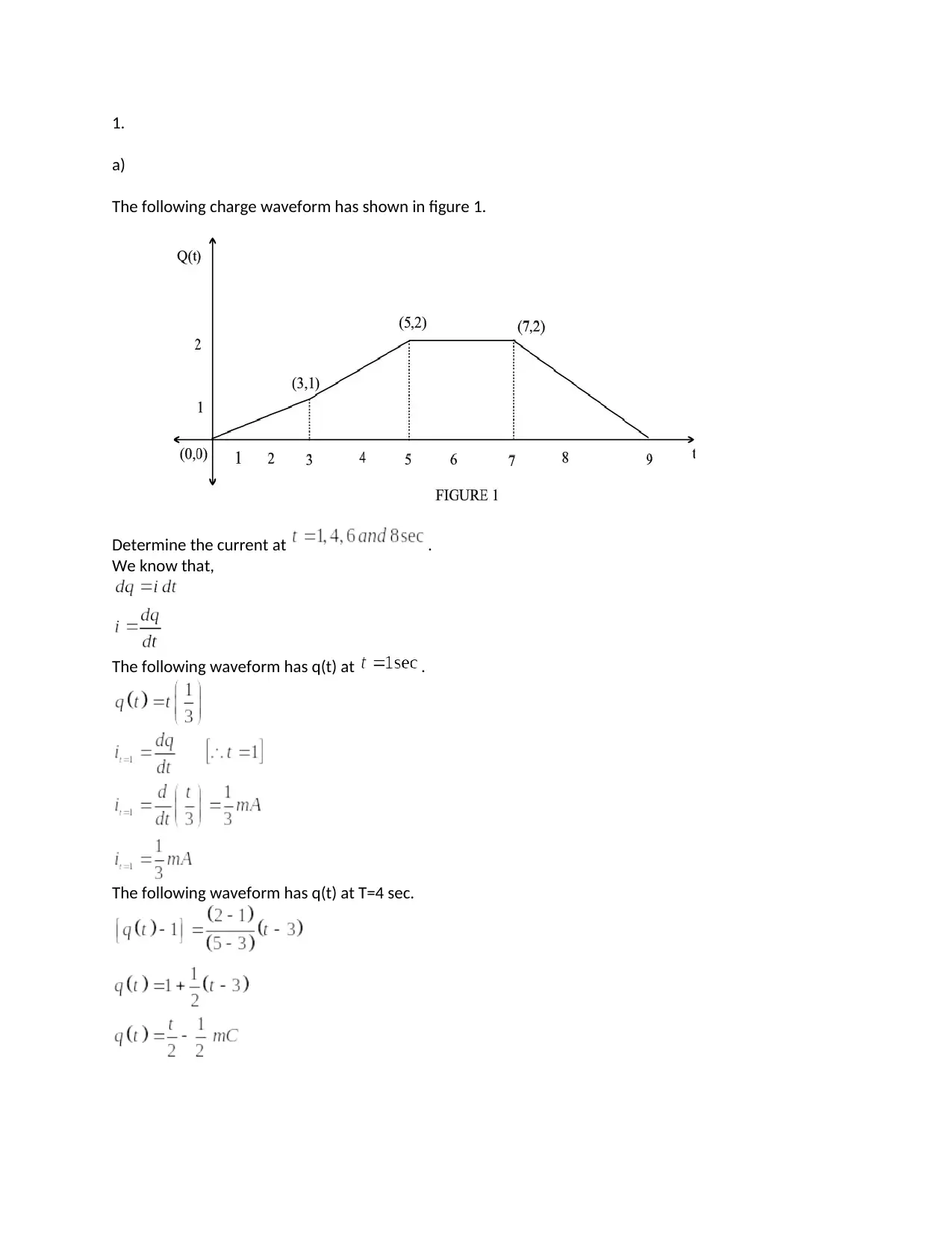
1.
a)
The following charge waveform has shown in figure 1.
Determine the current at .
We know that,
The following waveform has q(t) at .
The following waveform has q(t) at T=4 sec.
a)
The following charge waveform has shown in figure 1.
Determine the current at .
We know that,
The following waveform has q(t) at .
The following waveform has q(t) at T=4 sec.
Paraphrase This Document
Need a fresh take? Get an instant paraphrase of this document with our AI Paraphraser
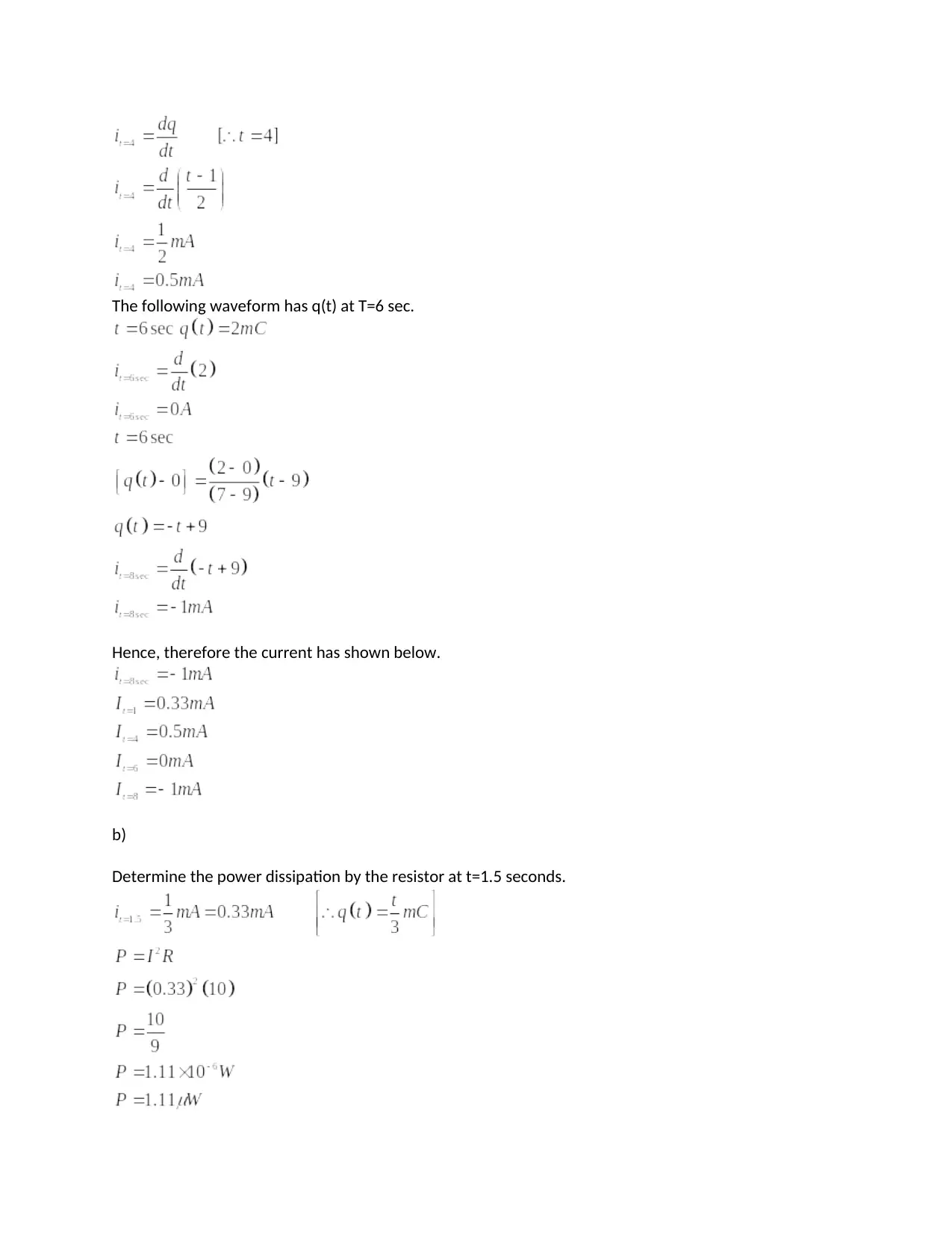
The following waveform has q(t) at T=6 sec.
Hence, therefore the current has shown below.
b)
Determine the power dissipation by the resistor at t=1.5 seconds.
Hence, therefore the current has shown below.
b)
Determine the power dissipation by the resistor at t=1.5 seconds.
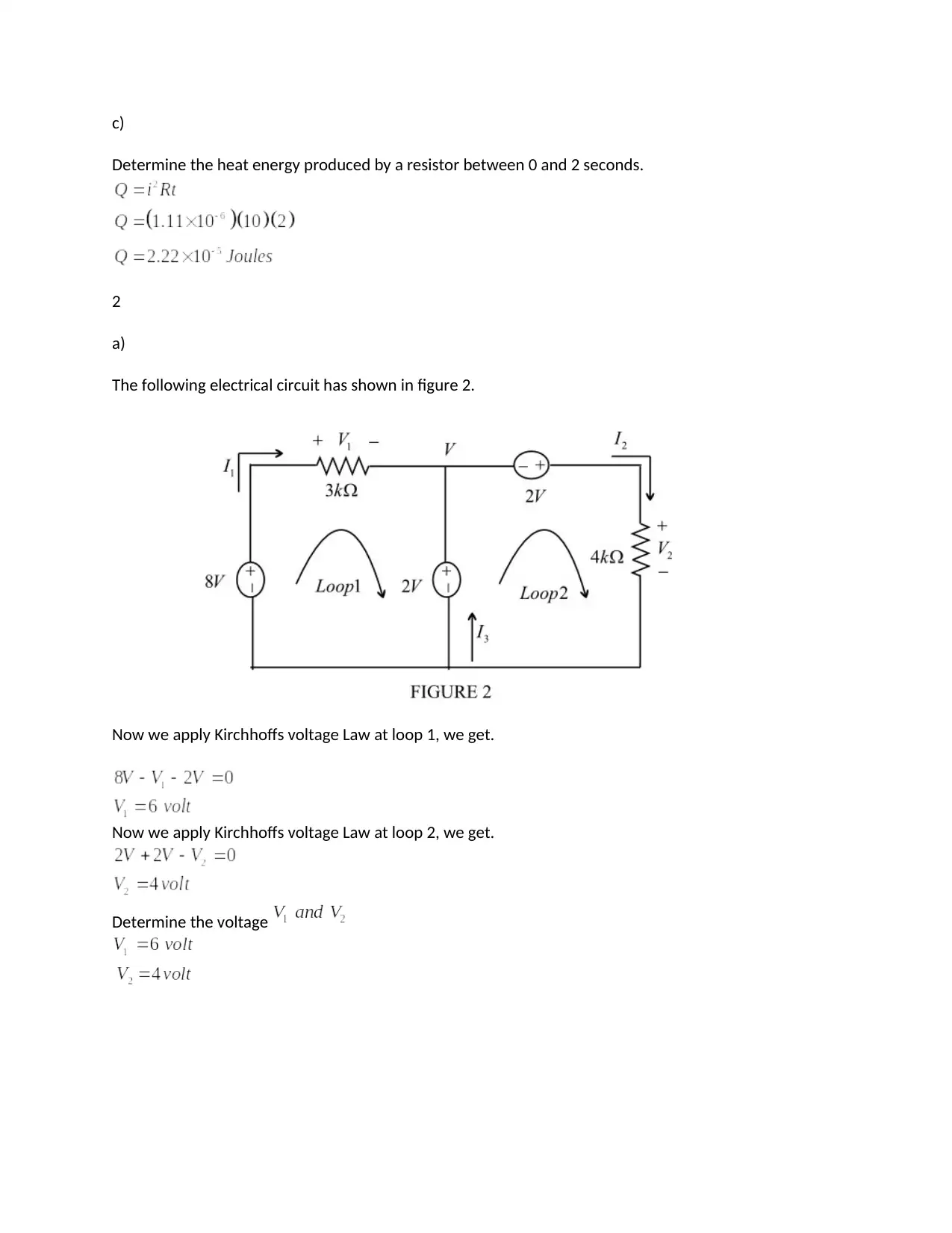
c)
Determine the heat energy produced by a resistor between 0 and 2 seconds.
2
a)
The following electrical circuit has shown in figure 2.
Now we apply Kirchhoffs voltage Law at loop 1, we get.
Now we apply Kirchhoffs voltage Law at loop 2, we get.
Determine the voltage
Determine the heat energy produced by a resistor between 0 and 2 seconds.
2
a)
The following electrical circuit has shown in figure 2.
Now we apply Kirchhoffs voltage Law at loop 1, we get.
Now we apply Kirchhoffs voltage Law at loop 2, we get.
Determine the voltage
You're viewing a preview
Unlock full access by subscribing today!
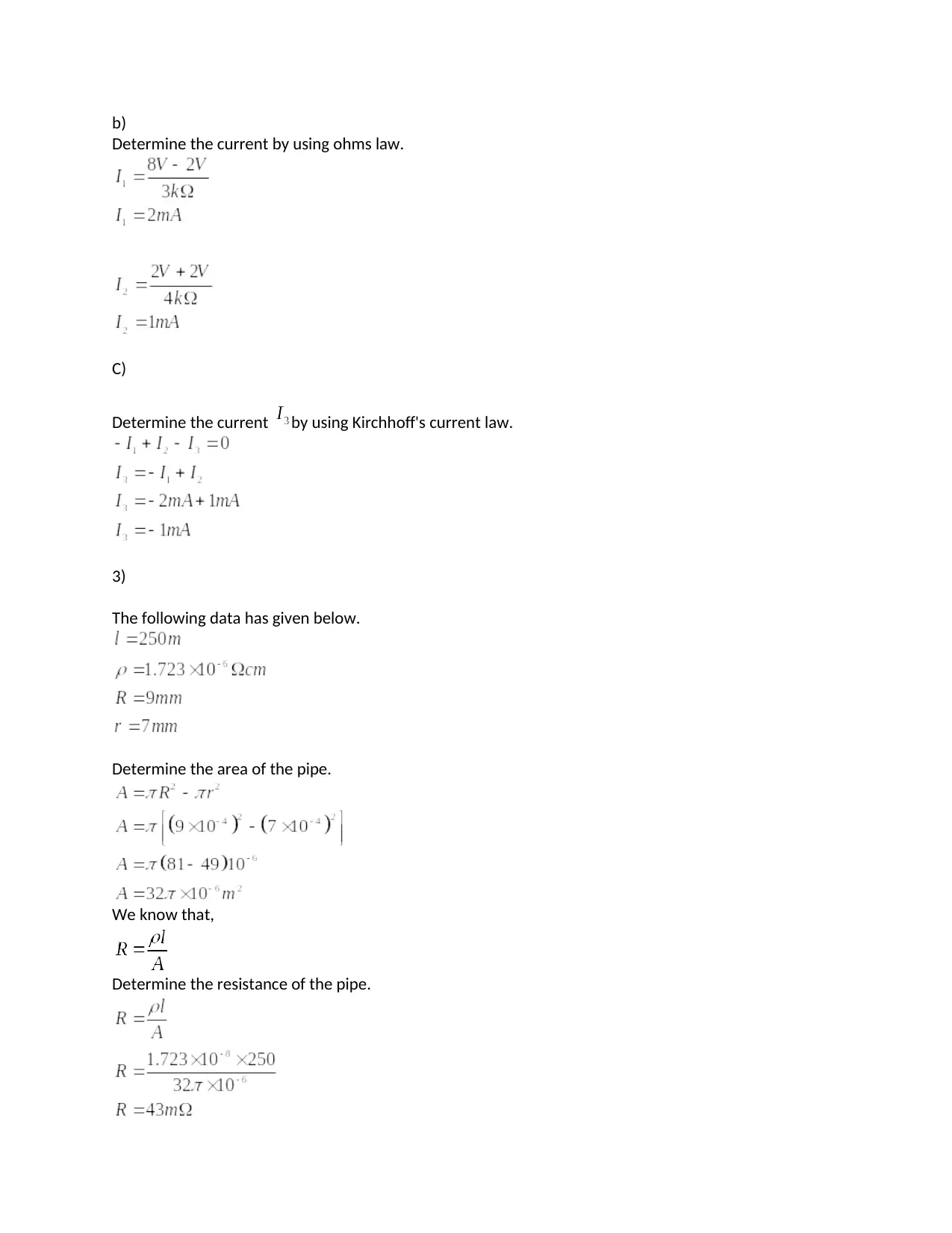
b)
Determine the current by using ohms law.
C)
Determine the current by using Kirchhoff's current law.
3)
The following data has given below.
Determine the area of the pipe.
We know that,
Determine the resistance of the pipe.
Determine the current by using ohms law.
C)
Determine the current by using Kirchhoff's current law.
3)
The following data has given below.
Determine the area of the pipe.
We know that,
Determine the resistance of the pipe.
Paraphrase This Document
Need a fresh take? Get an instant paraphrase of this document with our AI Paraphraser
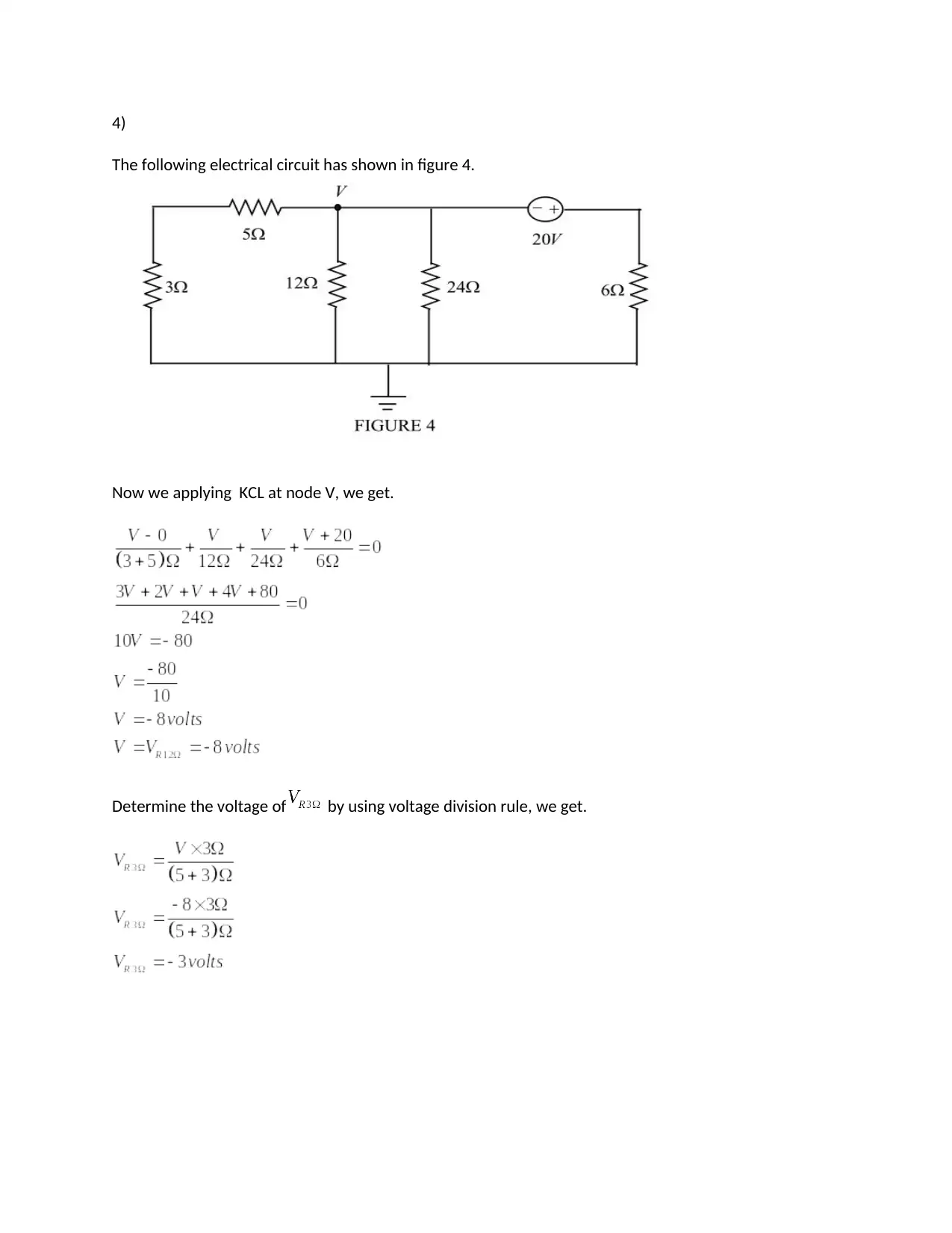
4)
The following electrical circuit has shown in figure 4.
Now we applying KCL at node V, we get.
Determine the voltage of by using voltage division rule, we get.
The following electrical circuit has shown in figure 4.
Now we applying KCL at node V, we get.
Determine the voltage of by using voltage division rule, we get.
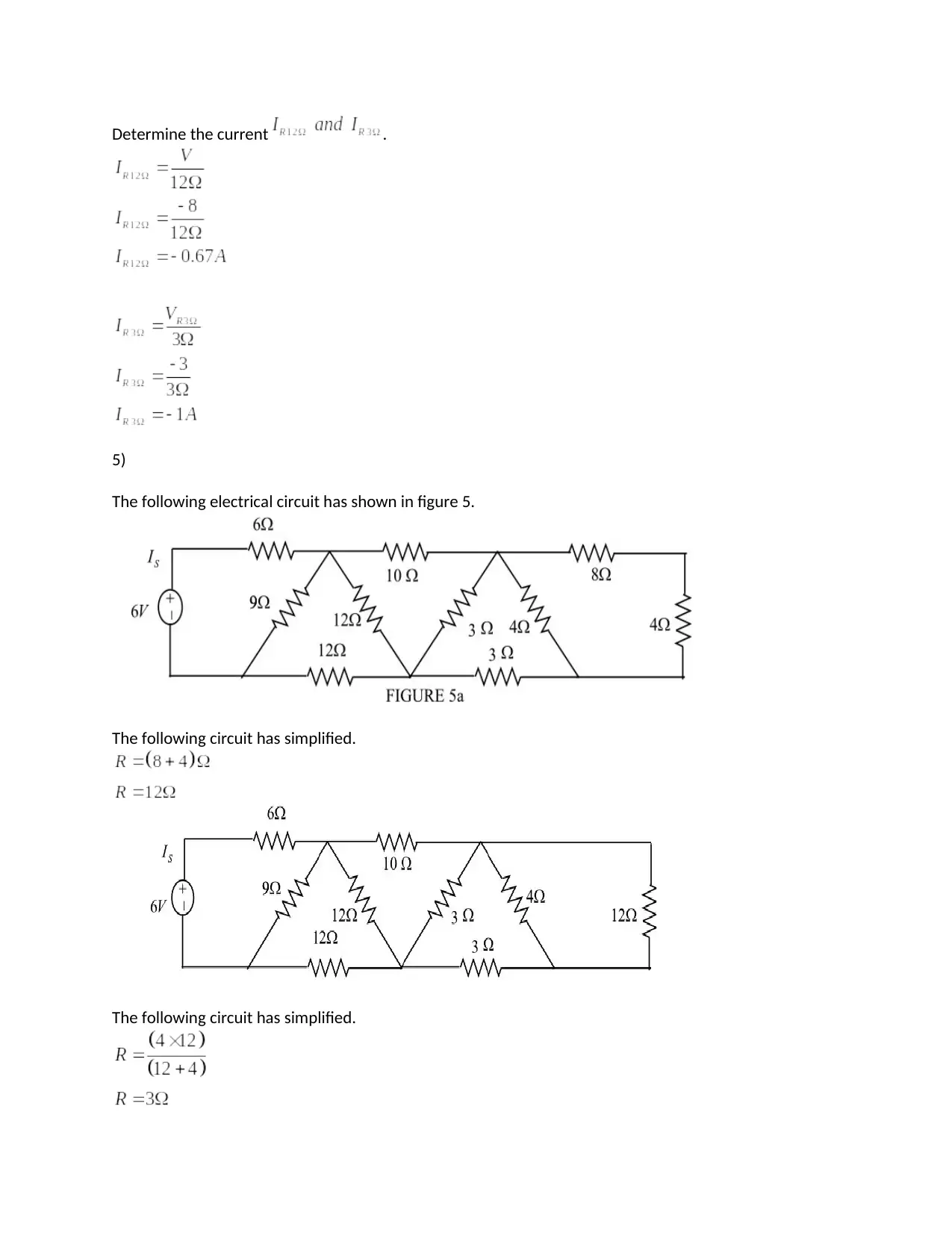
Determine the current .
5)
The following electrical circuit has shown in figure 5.
The following circuit has simplified.
The following circuit has simplified.
5)
The following electrical circuit has shown in figure 5.
The following circuit has simplified.
The following circuit has simplified.
You're viewing a preview
Unlock full access by subscribing today!
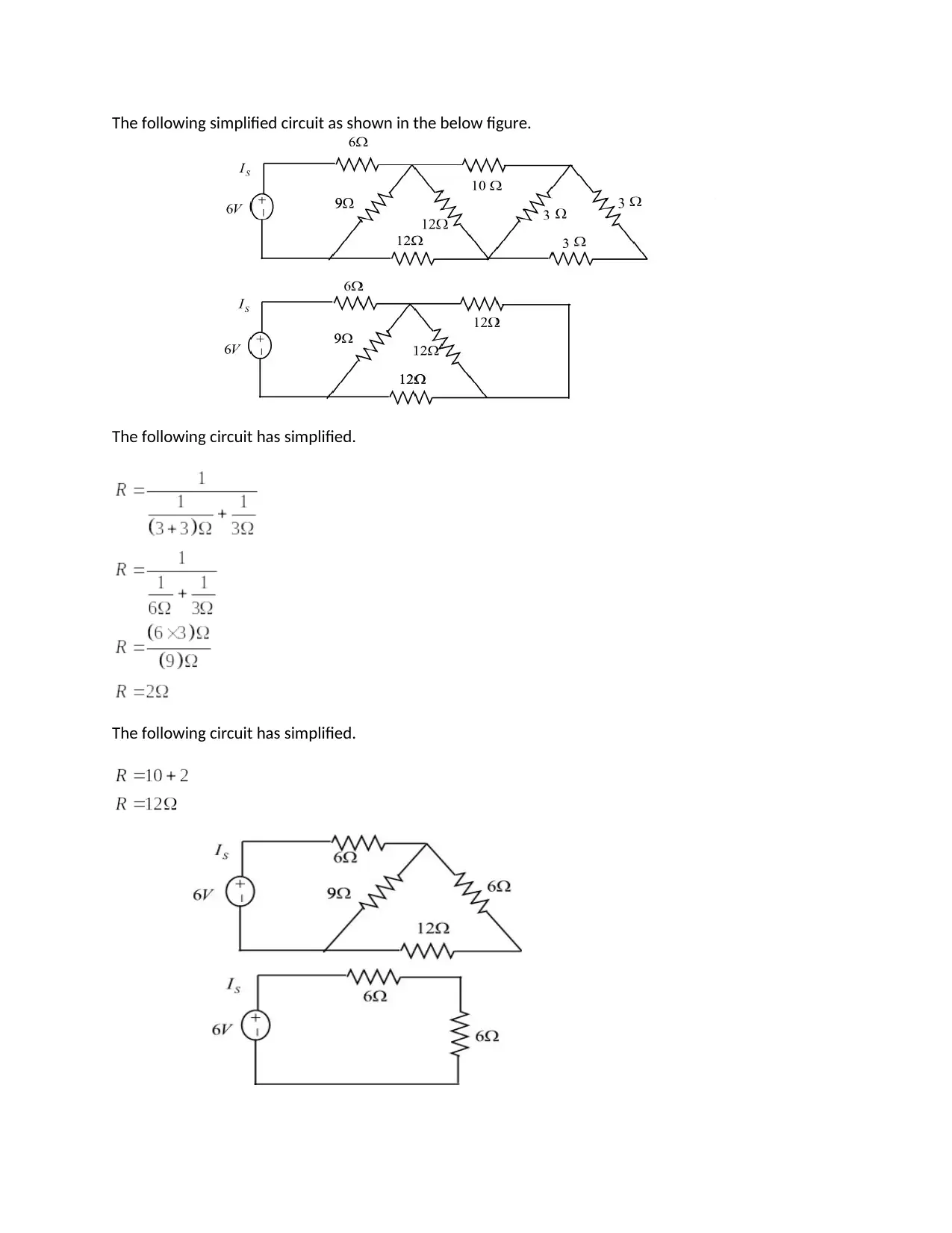
The following simplified circuit as shown in the below figure.
The following circuit has simplified.
The following circuit has simplified.
The following circuit has simplified.
The following circuit has simplified.
Paraphrase This Document
Need a fresh take? Get an instant paraphrase of this document with our AI Paraphraser
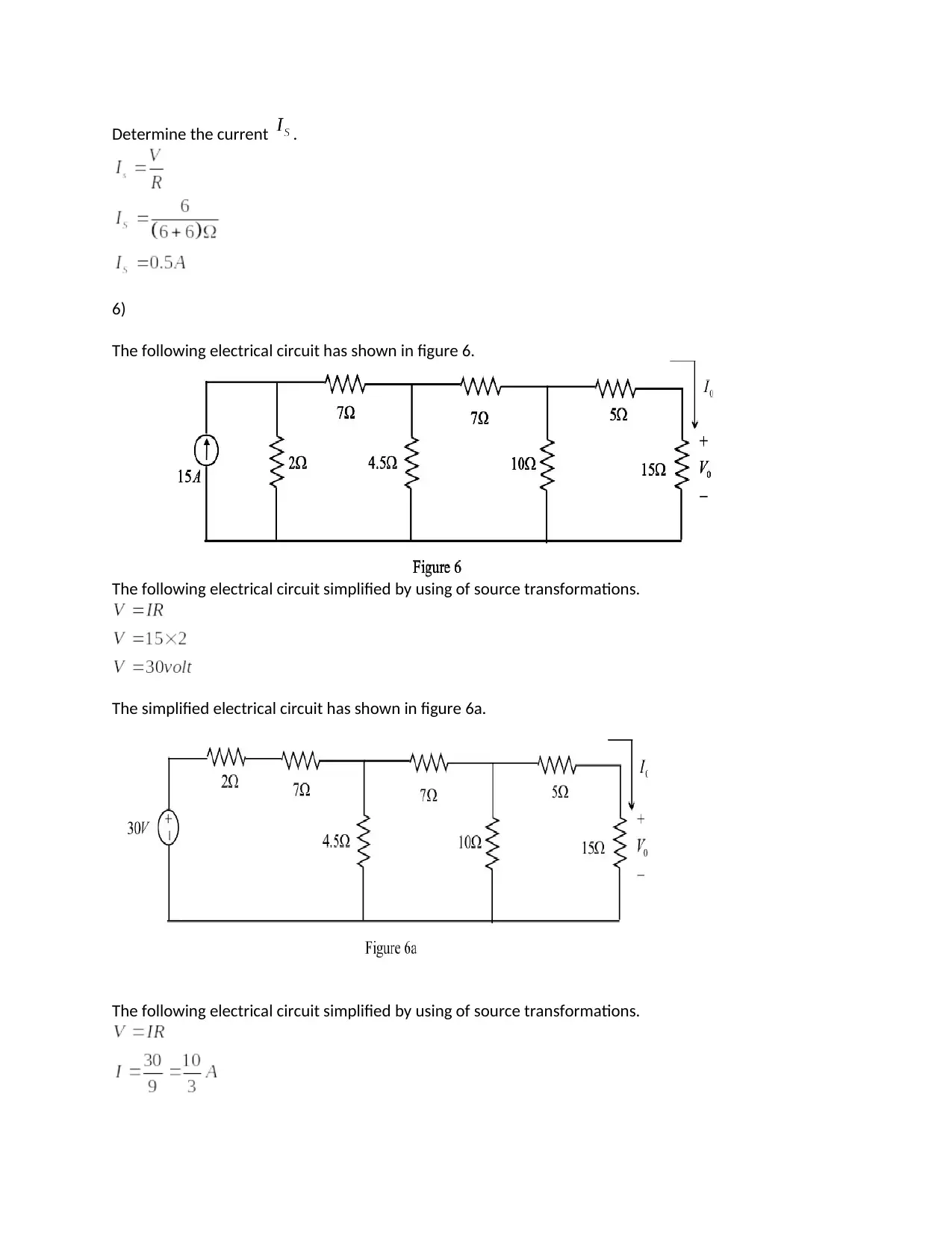
Determine the current .
6)
The following electrical circuit has shown in figure 6.
The following electrical circuit simplified by using of source transformations.
The simplified electrical circuit has shown in figure 6a.
The following electrical circuit simplified by using of source transformations.
6)
The following electrical circuit has shown in figure 6.
The following electrical circuit simplified by using of source transformations.
The simplified electrical circuit has shown in figure 6a.
The following electrical circuit simplified by using of source transformations.
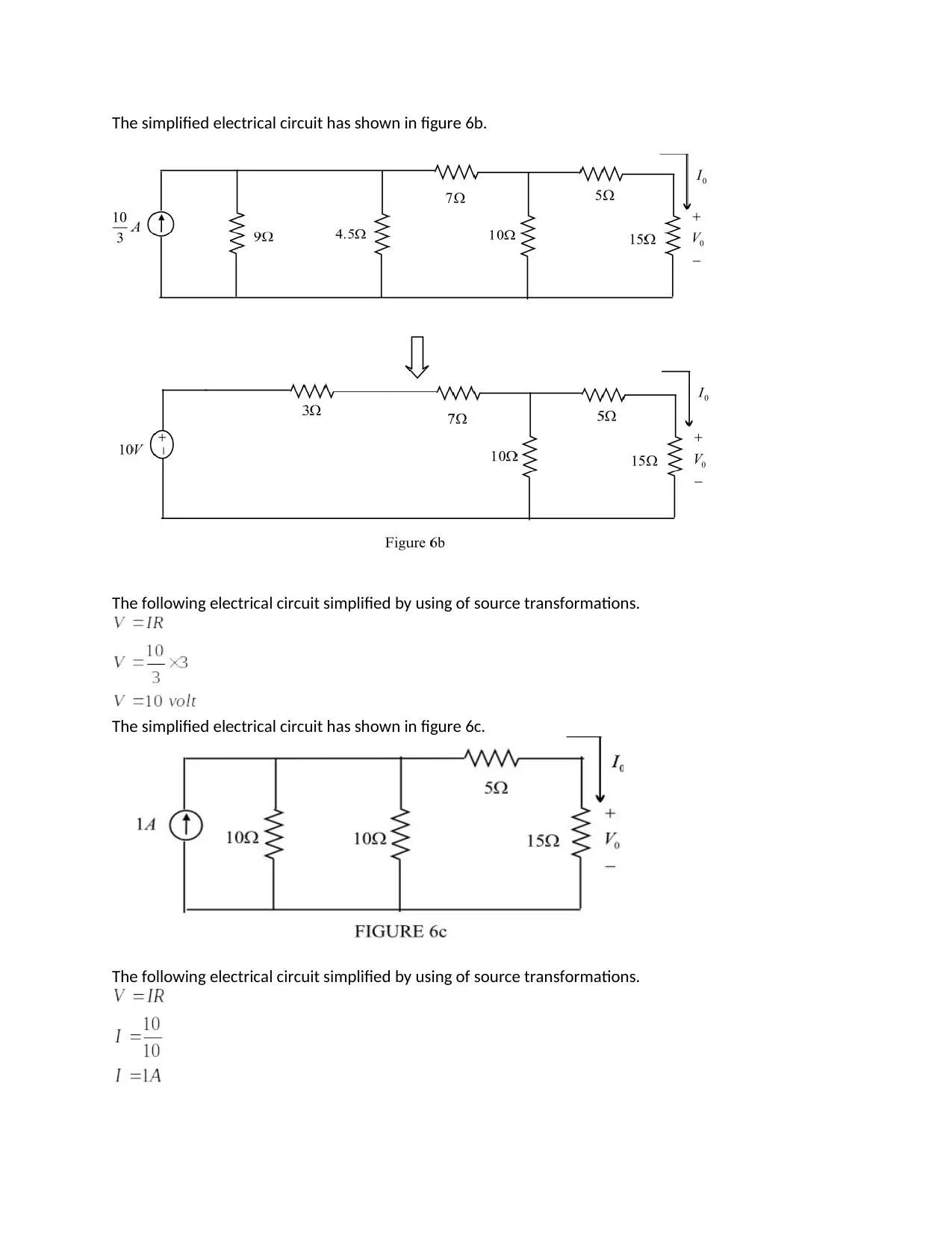
The simplified electrical circuit has shown in figure 6b.
The following electrical circuit simplified by using of source transformations.
The simplified electrical circuit has shown in figure 6c.
The following electrical circuit simplified by using of source transformations.
The following electrical circuit simplified by using of source transformations.
The simplified electrical circuit has shown in figure 6c.
The following electrical circuit simplified by using of source transformations.
You're viewing a preview
Unlock full access by subscribing today!
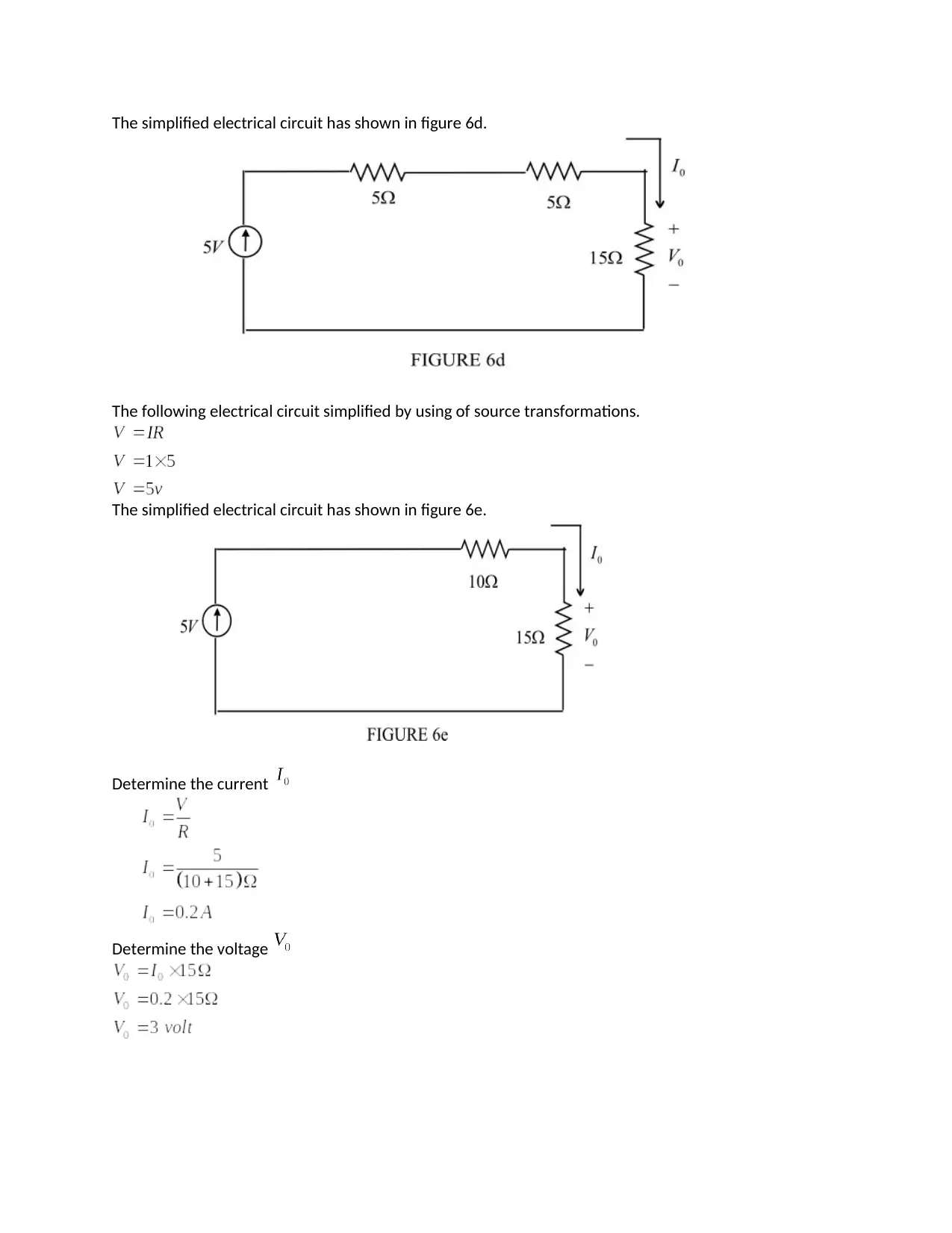
The simplified electrical circuit has shown in figure 6d.
The following electrical circuit simplified by using of source transformations.
The simplified electrical circuit has shown in figure 6e.
Determine the current
Determine the voltage
The following electrical circuit simplified by using of source transformations.
The simplified electrical circuit has shown in figure 6e.
Determine the current
Determine the voltage
Paraphrase This Document
Need a fresh take? Get an instant paraphrase of this document with our AI Paraphraser
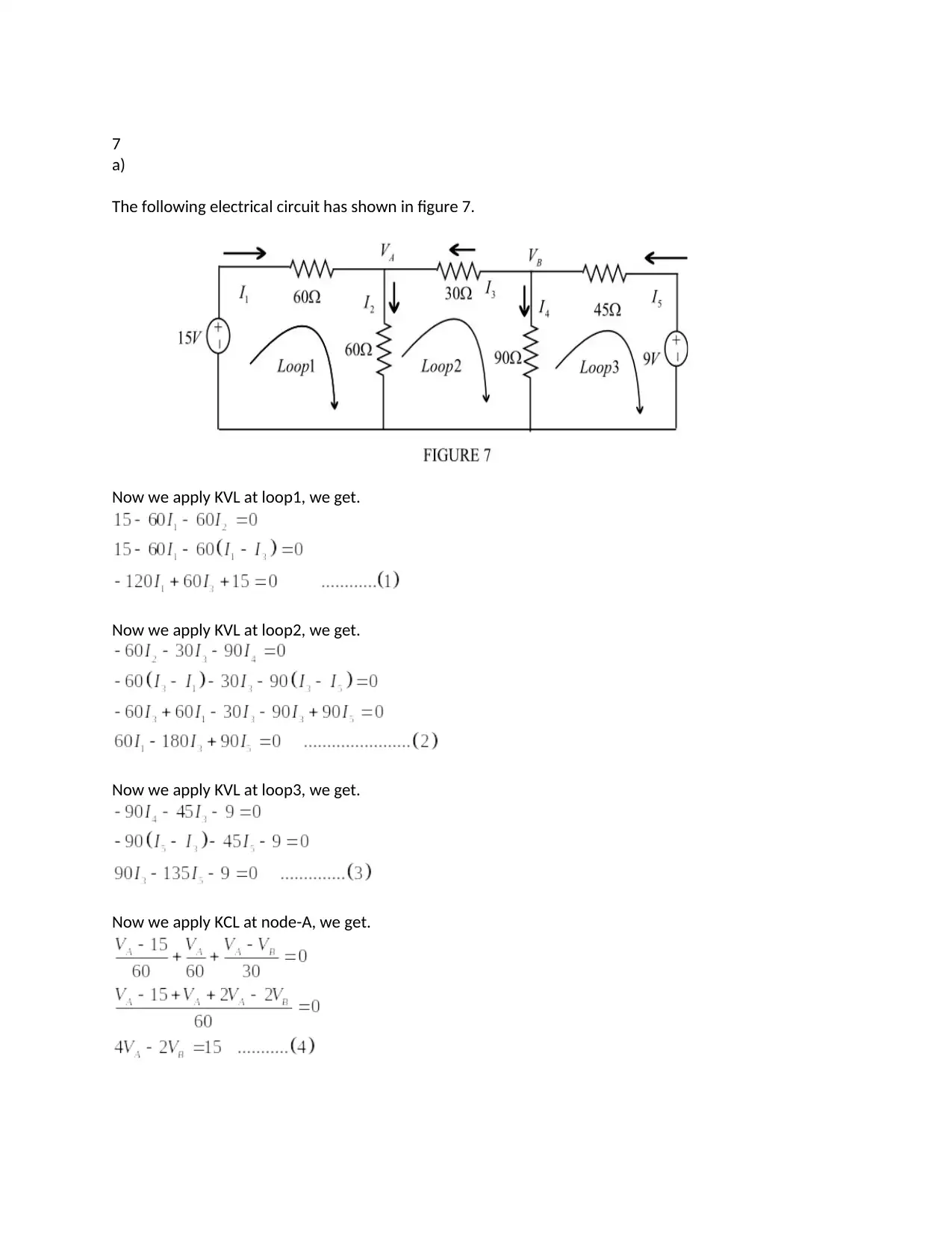
7
a)
The following electrical circuit has shown in figure 7.
Now we apply KVL at loop1, we get.
Now we apply KVL at loop2, we get.
Now we apply KVL at loop3, we get.
Now we apply KCL at node-A, we get.
a)
The following electrical circuit has shown in figure 7.
Now we apply KVL at loop1, we get.
Now we apply KVL at loop2, we get.
Now we apply KVL at loop3, we get.
Now we apply KCL at node-A, we get.
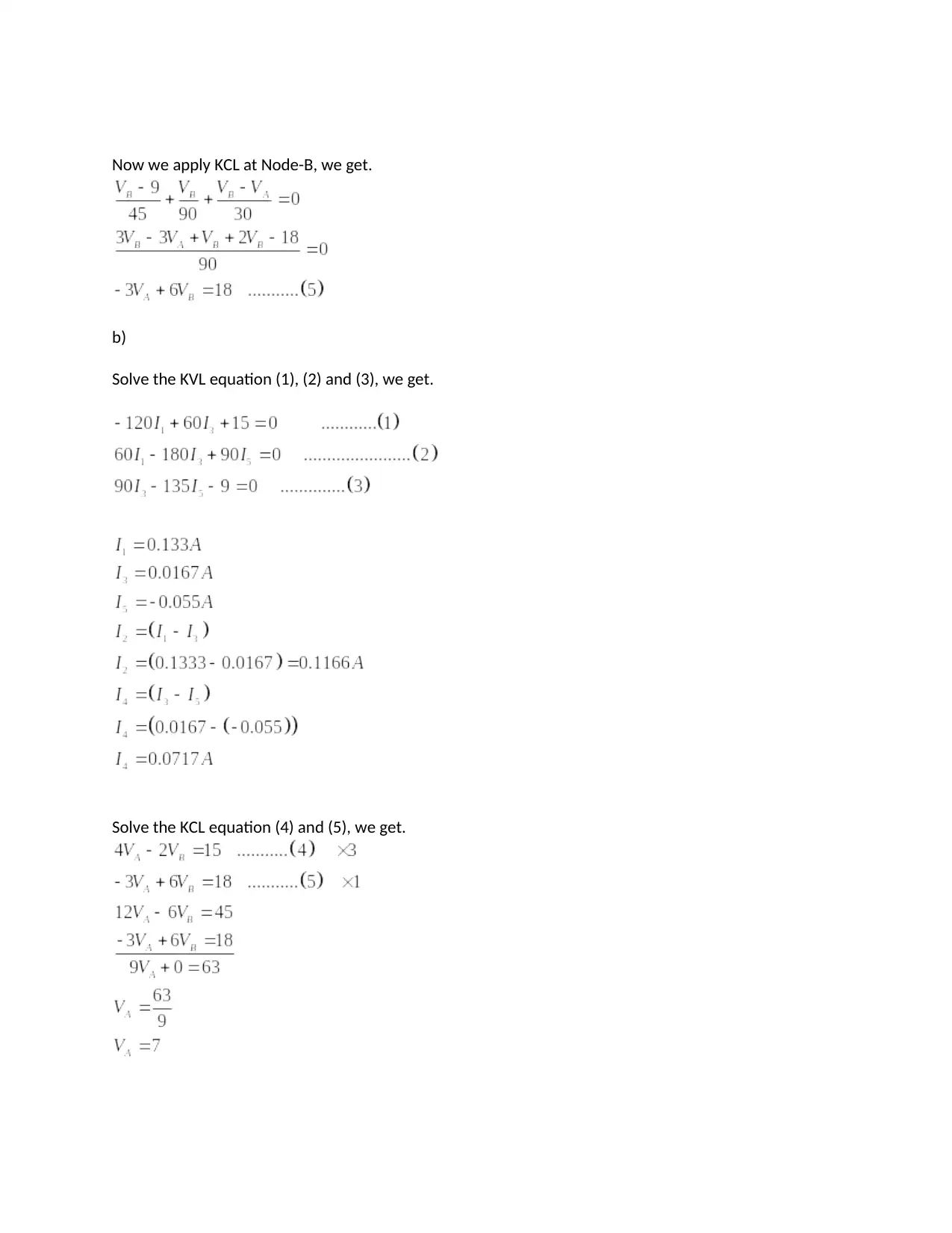
Now we apply KCL at Node-B, we get.
b)
Solve the KVL equation (1), (2) and (3), we get.
Solve the KCL equation (4) and (5), we get.
b)
Solve the KVL equation (1), (2) and (3), we get.
Solve the KCL equation (4) and (5), we get.
You're viewing a preview
Unlock full access by subscribing today!
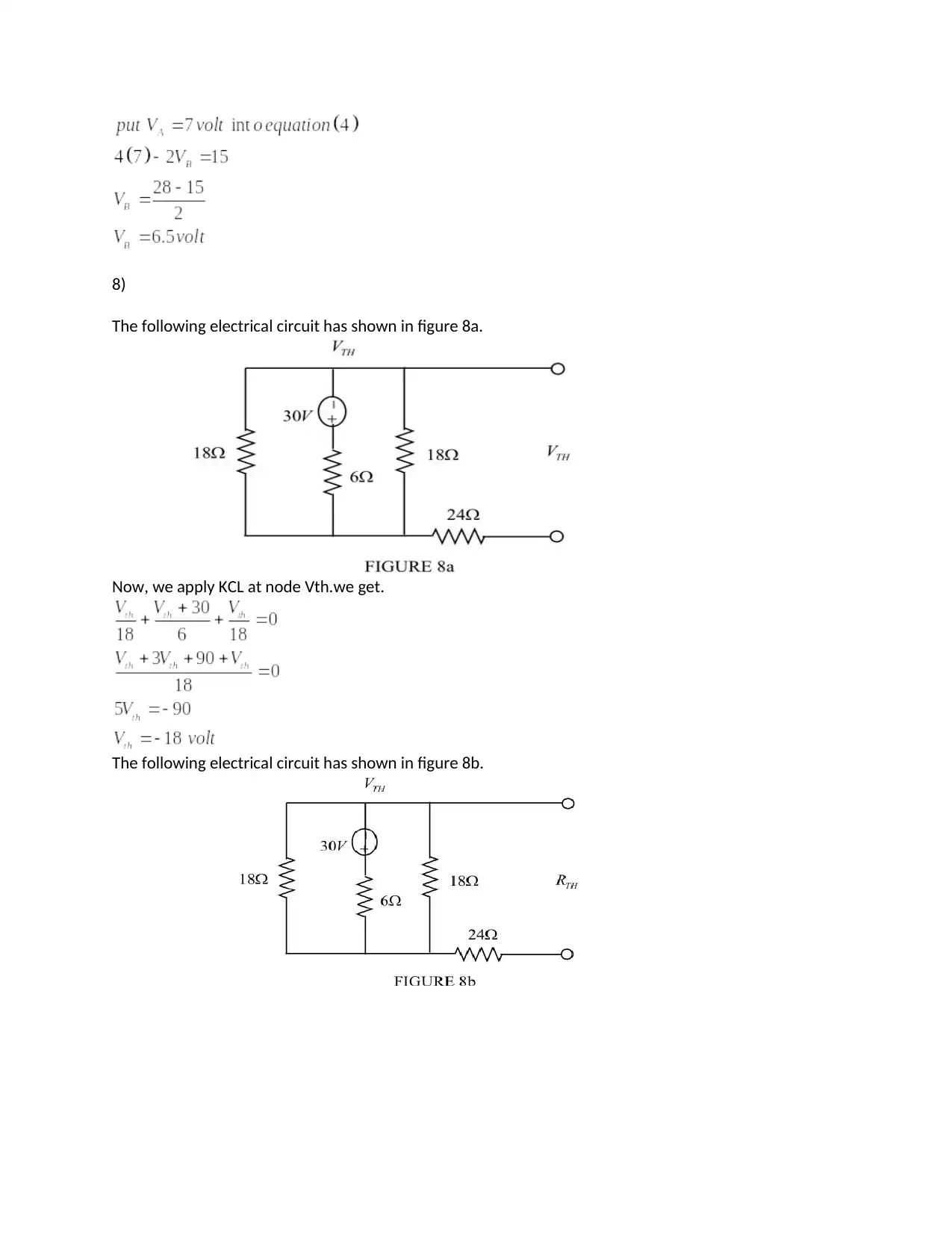
8)
The following electrical circuit has shown in figure 8a.
Now, we apply KCL at node Vth.we get.
The following electrical circuit has shown in figure 8b.
The following electrical circuit has shown in figure 8a.
Now, we apply KCL at node Vth.we get.
The following electrical circuit has shown in figure 8b.
Paraphrase This Document
Need a fresh take? Get an instant paraphrase of this document with our AI Paraphraser
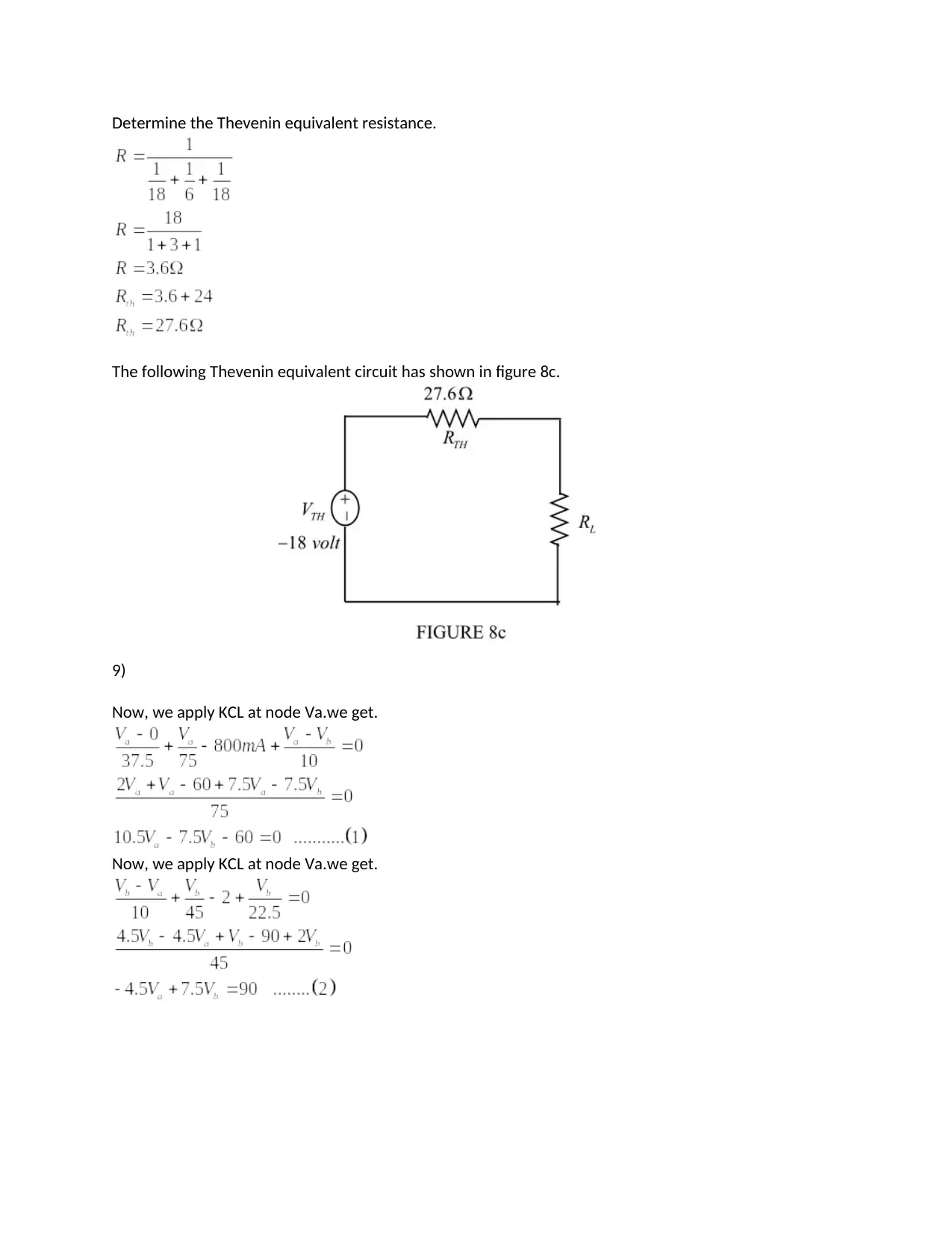
Determine the Thevenin equivalent resistance.
The following Thevenin equivalent circuit has shown in figure 8c.
9)
Now, we apply KCL at node Va.we get.
Now, we apply KCL at node Va.we get.
The following Thevenin equivalent circuit has shown in figure 8c.
9)
Now, we apply KCL at node Va.we get.
Now, we apply KCL at node Va.we get.
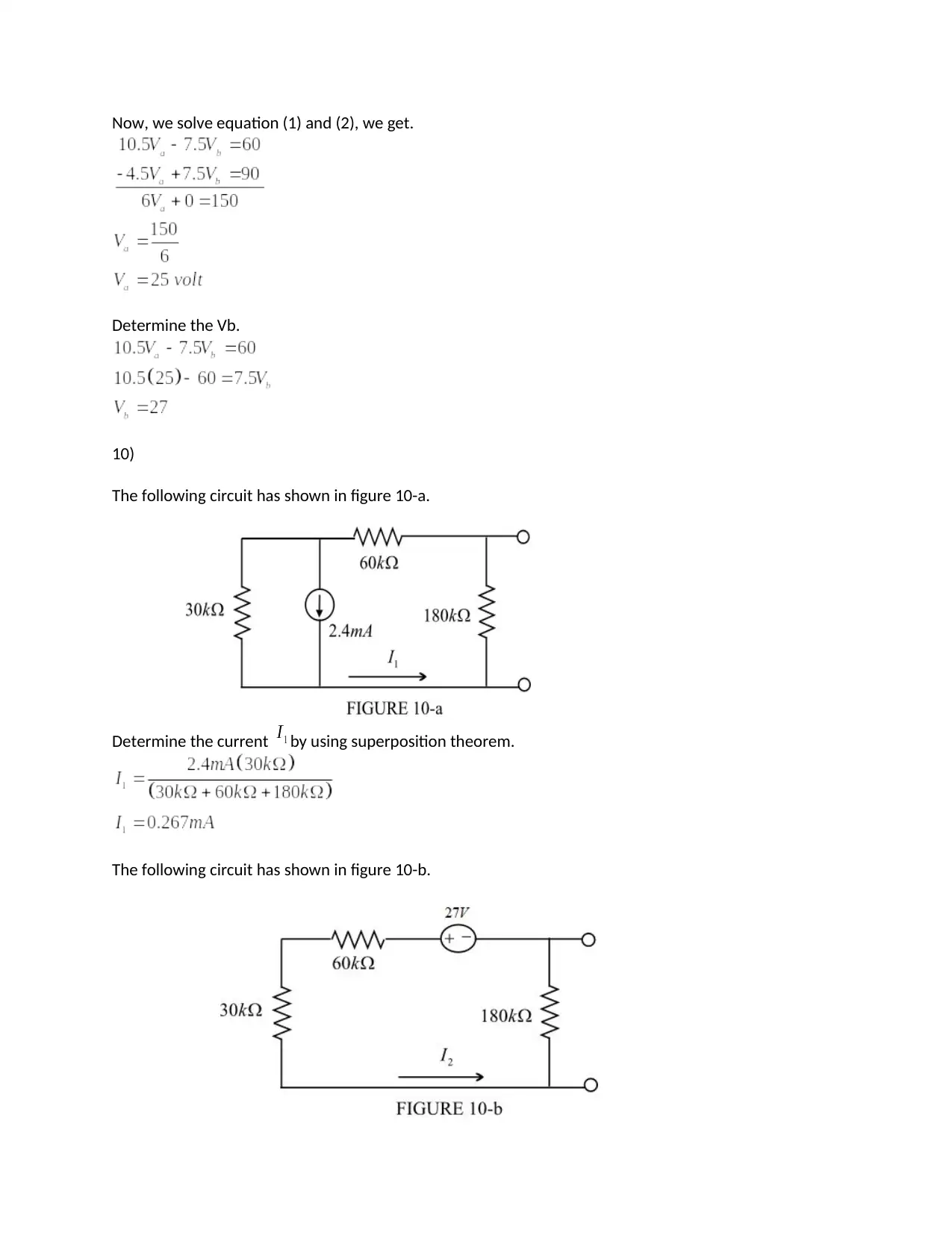
Now, we solve equation (1) and (2), we get.
Determine the Vb.
10)
The following circuit has shown in figure 10-a.
Determine the current by using superposition theorem.
The following circuit has shown in figure 10-b.
Determine the Vb.
10)
The following circuit has shown in figure 10-a.
Determine the current by using superposition theorem.
The following circuit has shown in figure 10-b.
You're viewing a preview
Unlock full access by subscribing today!
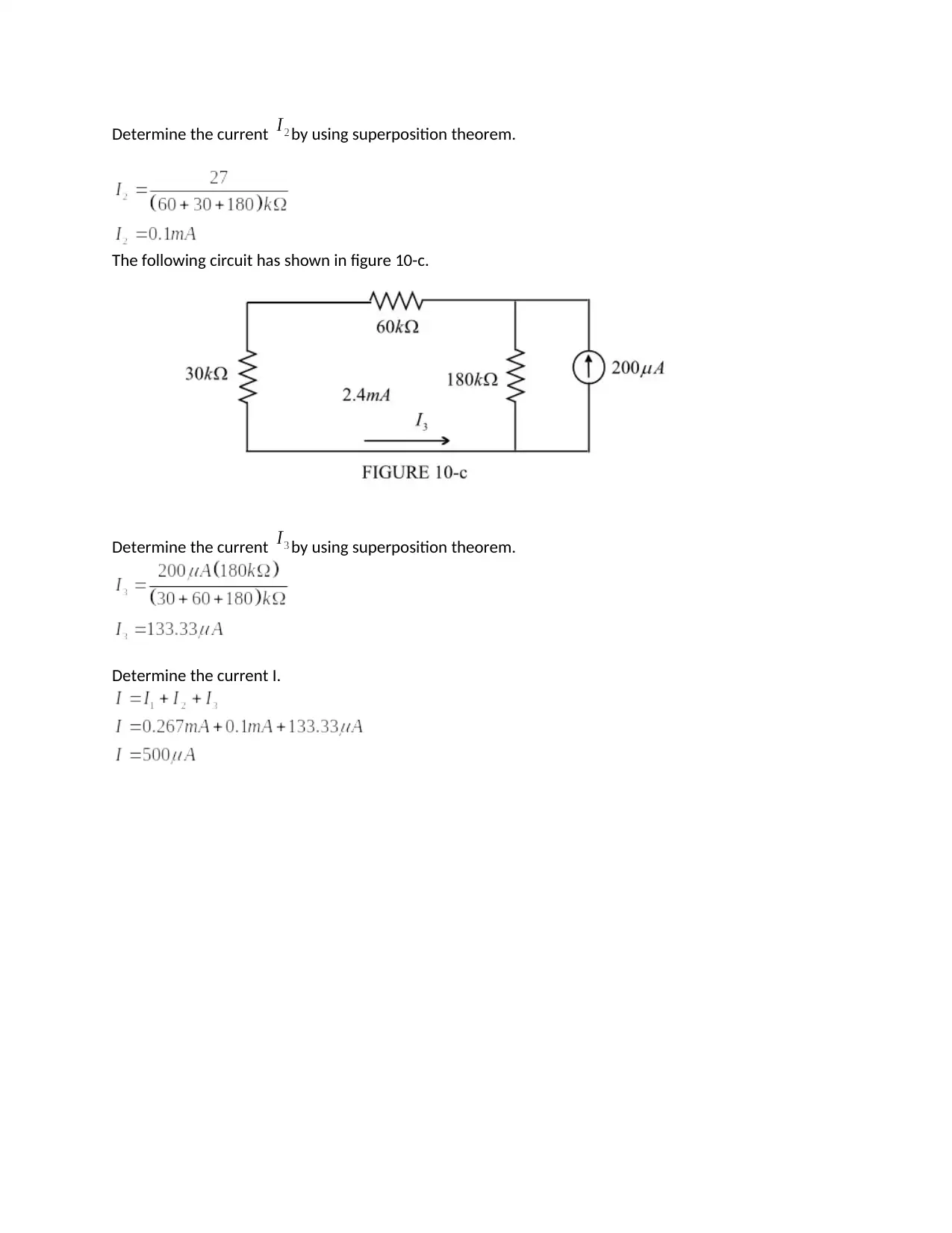
Determine the current by using superposition theorem.
The following circuit has shown in figure 10-c.
Determine the current by using superposition theorem.
Determine the current I.
The following circuit has shown in figure 10-c.
Determine the current by using superposition theorem.
Determine the current I.
1 out of 16
Related Documents
Your All-in-One AI-Powered Toolkit for Academic Success.
+13062052269
info@desklib.com
Available 24*7 on WhatsApp / Email
![[object Object]](/_next/static/media/star-bottom.7253800d.svg)
Unlock your academic potential
© 2024 | Zucol Services PVT LTD | All rights reserved.



